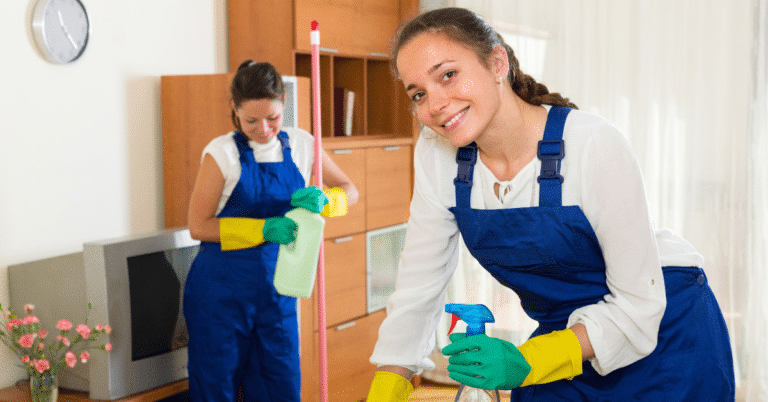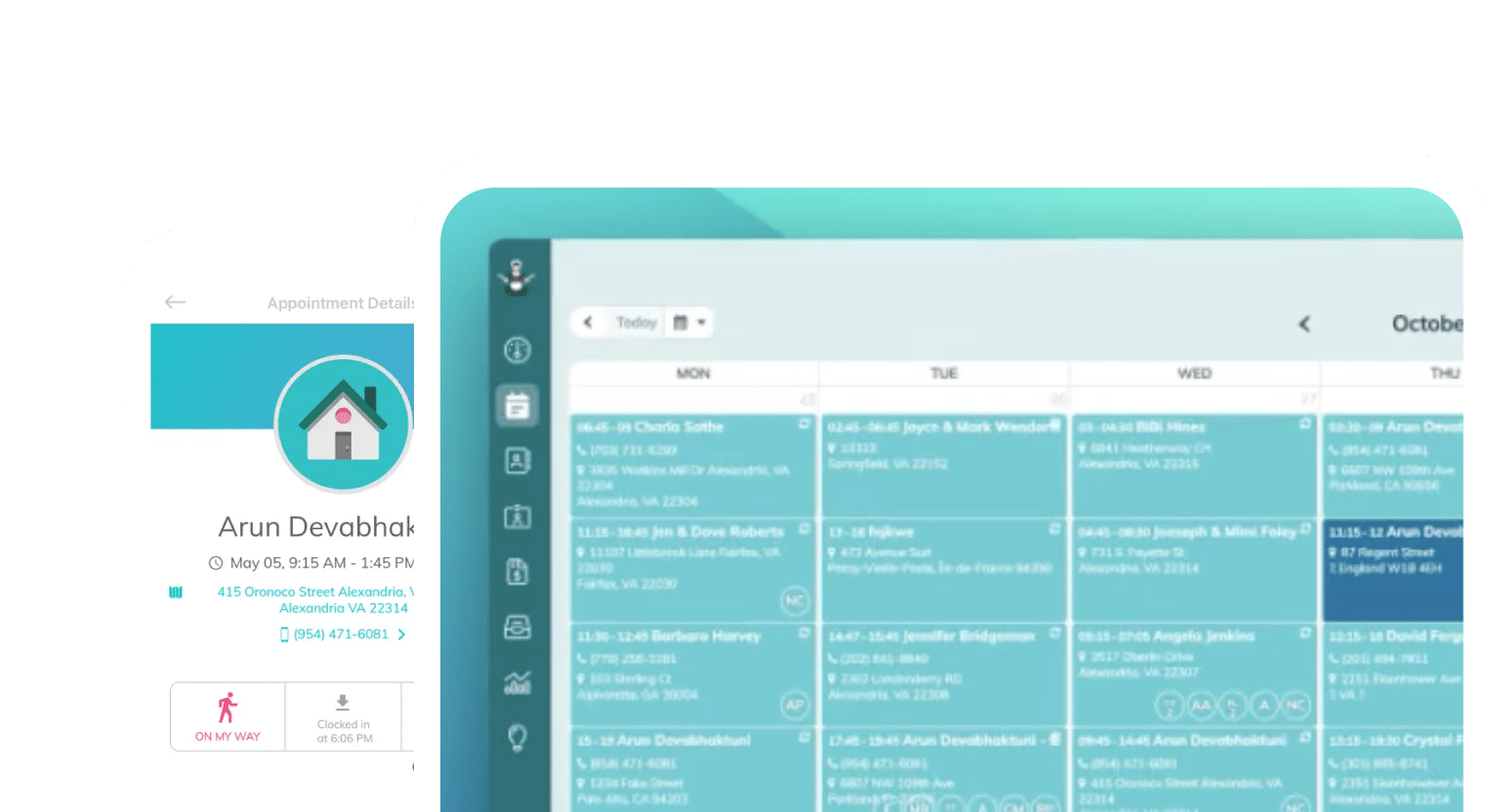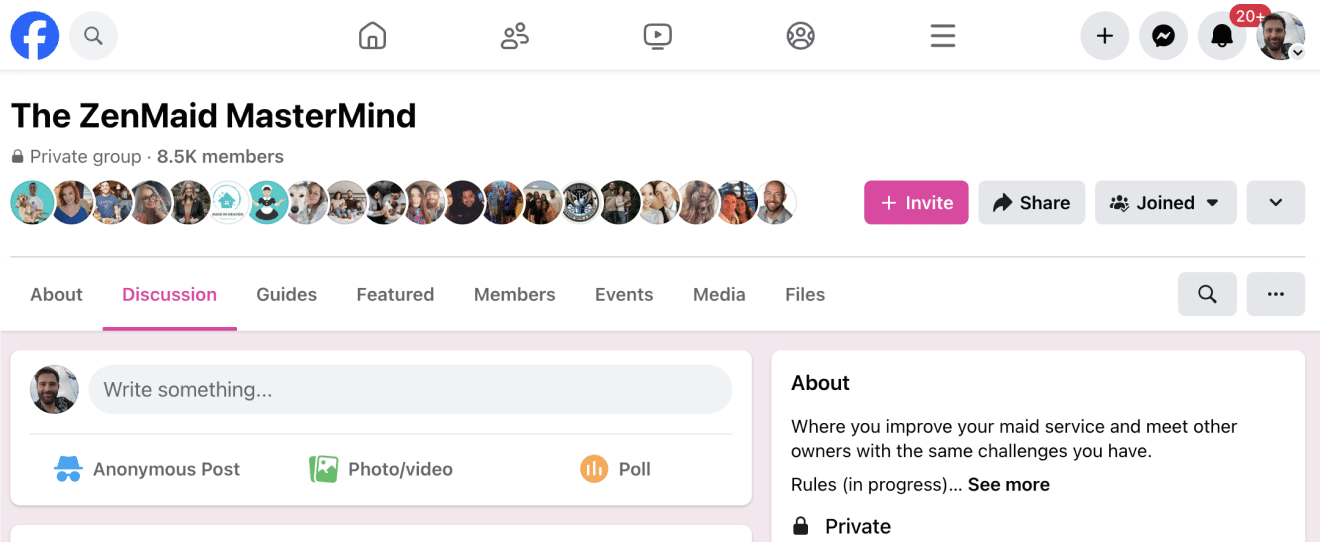WHY TRUST US? The ZenMaid team has eight current and past cleaning business owners, including our CEO and founder Amar, who know the ins and outs of the maid service industry like the back of their hands. They share their expertise with us in product development, with the customer success team, and content, which includes the article you’re about to read. We also partner with some amazing leaders in the cleaning industry, like Debbie Sardone, Angela Brown, Courtney Wisely, Chris Schwab, and more, to provide you with the latest industry insights. The tips and advice you’ll find on our blog have helped our team grow their maid services, and we’re excited to share them with you to help you grow your business too.
Improve Your Employee Training System and Increase Cleaner Quality with Jamie Reader’s Expert Tips
ZenMaid is the simple scheduling software that will help you save 30+ hours in your cleaning business, every week. Join thousands of other cleaning business owners who now have time to take a nap, spend time with their families, and take vacations! Start your free 14-day trial today to discover how many hours you can get back in your week.
No matter what kind of business you’re running, customer attrition can be a huge pain point — especially when it’s due to a service failure. And, the stakes are high – just think about the significant dent in your revenue when you lose a customer. If a single client brings in $3,900 a year, a loss of ten clients in a month amounts to almost $40,000 in revenue. Ouch, right?
Ideally, your training system should consist of three components: the owner’s training, the trainers’ training, and the cleaners’ training. If your current system only includes training for the cleaners in the field, you might be missing out on maximizing your employees’ potential.
And if you’re already nodding in agreement because you’ve been there, wrestling with a disorganized business due to an inadequate training system, don’t worry – you’re not alone. Cleaning business expert, Jamie Reader, has been there too, and in this article, we’re sharing her game-changing strategy that can 10X your employee quality in the field — excited yet?
Table of contents

The Problem of Service Failures
Before we delve into Jamie’s strategy, let’s take a moment to acknowledge the elephant in the room: service failures. We’ve all been there, spending time and resources selling our fantastic services, only for customers to point out obvious misses. The frustration can be all-consuming and draining, especially when it’s you fielding those customer service calls. This issue drove Jamie to devise a high-quality training program to eliminate such service issues, and she assures us it’s been a complete game-changer.
Start With This Question:
Here’s the deal-breaker: How are you handling service failures with your field staff? For instance, you might employ the sandwich technique –- a positive comment, followed by a negative one, and ending on another positive note. Let’s say during a quality check in a bathroom, you praise the mirror cleaning (positive), point out the mold in the shower (negative), then commend them on the clean floor (positive). Sounds reasonable, right?…
But, what does this really achieve? You’re treating symptoms but failing to diagnose the root cause of the problem. A comprehensive training system, with all three components in place, allows you to diagnose where the breakdown is happening.
Finding the Root Cause Diagnosis
The secret sauce to ramp up your training effectiveness lies in asking open-ended questions to your cleaners during spot checks. These are not just yes-or-no questions, but those that make your cleaners think about what they’re doing and allow you to determine where the breakdown is occurring in your training system.

The Game-Changer: Open-Ended Questions
So, what do open-ended questions look like in practice? These questions are aimed at eliciting more than a simple yes or no. You might ask, “Can you explain to me how you clean the shower?” or “Walk me through your process for ensuring the mirrors are streak-free.” These questions prompt your cleaners to think critically about their methods and procedures, allowing you to identify where training gaps may exist.
For example, if a cleaner is struggling with getting a tiled shower squeaky clean, your conversation might be more insightful if you ask, “Can you show me how you’ve been handling the tiled showers?” rather than just pointing out the shortcomings. This approach can unveil whether the cleaner wasn’t adequately trained on shower cleaning, if they’ve forgotten the training, or if they’re deliberately not following the procedures.
It’s a proactive method that enables you to identify and rectify training issues before they escalate into customer service failures. Plus, it gives your cleaners an opportunity to be part of the solution, making them feel valued and empowered in their roles.

13 Speed Cleaning Rules for Your Cleaner Training Program
An excellent resource to enhance your training program is Speed Cleaning, which incorporates 13 rules designed to streamline the cleaning process. These rules serve as a foundation for efficient and effective cleaning practices.
When addressing specific areas like shower cleaning, use the 13 rules as a reference point. Encourage your cleaners to explain their techniques and thought processes, ensuring they align with the principles outlined in Speed Cleaning. This approach allows you to identify any deviations or breakdowns in the training system and provide targeted guidance.
Here are the 13 Rules:
- Make every move count: Teach your cleaners the significance of efficiency and effectiveness in their cleaning tasks. Emphasize the importance of minimizing wasted time and maximizing productivity.
- Use the right tools: Provide your cleaners with the necessary tools and equipment to perform their tasks efficiently. Ensure they understand how to use each tool effectively for different cleaning purposes.
- Work from top to bottom: Train your cleaners to clean from higher surfaces to lower ones, such as dusting before vacuuming. This approach prevents dust and debris from settling on already cleaned areas.
- If it isn’t dirty, don’t over-clean it: Teach your cleaners to focus on areas that require attention rather than spending excessive time and effort on already clean surfaces. This approach optimizes their cleaning time and energy.
- Don’t rinse or wipe a surface before it’s clean: Ensure your cleaners understand the importance of thorough cleaning. They should avoid prematurely rinsing or wiping surfaces before effectively removing dirt, grime, or cleaning solutions.
- Don’t keep working after it’s clean: Train your cleaners to recognize when a task is complete and not to overdo it. Continuing to clean excessively can waste time and potentially damage surfaces.
- If what you’re doing isn’t working, shift to a heavier-duty product or tool: Encourage your cleaners to adapt their approach if they encounter stubborn stains or dirt. Teach them to use appropriate cleaning products and tools to achieve desired results.
- Keep your tools in impeccable shape: Emphasize the significance of maintaining clean and well-functioning equipment. Regularly inspect and replace worn-out or damaged tools to ensure efficient cleaning.
- Repetition makes for smoother moves: Reinforce the importance of practice and repetition in mastering cleaning techniques. Encourage your cleaners to consistently hone their skills, leading to smoother and more efficient cleaning routines.
- Pay attention: Instill the value of attentiveness in your cleaners. Stress the importance of observing details, identifying problem areas, and maintaining consistent cleaning standards.
- Keep track of your time: Teach your cleaners to manage their time effectively during cleaning tasks. By tracking their time, they can optimize their efficiency and meet client expectations.
- Get a little bit faster every time: Encourage your cleaners to strive for continuous improvement in their cleaning speed without compromising quality. Incremental progress can significantly enhance their productivity over time.
- Use both hands: Train your cleaners to utilize both hands during cleaning tasks whenever possible. This ambidextrous approach increases efficiency and reduces the time required to complete each task.
The Role of Your Quality Control (QC) Team
Before we wrap up, we want to take a moment to note the role of your Quality Control team (QC): Your QC team plays a crucial role in ensuring continued service excellence. By equipping them with the knowledge and training to ask insightful open-ended questions during quality checks, you empower them to diagnose and address training issues promptly. They become the key link in maintaining consistency and improving cleaner performance.
For example, during a quality check, encourage your QC team to engage in conversations that go beyond surface-level feedback. Instead of the “sandwich technique,” where positives and negatives are sandwiched together, focus on understanding the cleaner’s thought process. Ask questions like, “Teach me your shower cleaning process as if I’m a trainee.” This approach helps identify training gaps and reinforces the importance of adherence to established cleaning procedures.
Identifying Training Program Breakdowns
A comprehensive training program not only allows you to diagnose individual cleaner issues but also identify systemic breakdowns. It helps you determine if the breakdown is in the initial training provided by the owner or trainers, or if the cleaners are not effectively applying the knowledge in the field.
By consistently asking open-ended questions and actively engaging with your cleaners, you gain valuable insights into the training program’s effectiveness. This knowledge enables you to refine your training materials, provide additional guidance where needed, and ensure that all team members are aligned with your cleaning standards.
Wrapping Up
With a well-trained and motivated team, you can reduce customer attrition, consistently provide exceptional service, and unlock new opportunities for growth. So don’t wait, take action today and invest in your training program to revolutionize your cleaning business.
Next Steps
If you found this article helpful for your maid service, you may also like:
- How to Transition from Paper Scheduling to Software in Your Cleaning Business (Without Losing Clients or Your Mind)
- Filthy Rich Cleaners Podcast E24: Why I’m Cutting a $56k Service from My Cleaning Business
- 5 Hidden Costs of ‘Free’ Scheduling: What 4 Cleaning Business Owners Wish They’d Known Sooner
- Filthy Rich Cleaners Podcast E23: Stop Making Excuses: How to Overcome Your Mental Barriers to Success with Liz Trotter
- Cleaning Business Safety: A Guide to Using ZenMaid’s SOS Alert
This talk first aired at the 2022 Maid Service Success Summit. The Maid Summit is an annual online event that brings together the most successful leaders in the cleaning industry, like Debbie Sardone, Angela Brown, Courtney Wisely, Amy Caris, Chris Schwab, and more. Get free access to masterclasses and workshops to help you grow, scale, and automate your cleaning business to get more leads and profit. Make sure you’re on our email list to find out how to get free tickets to the next event.

 Frustrated with your scheduling? Try the easiest-to-use calendar app, made by and for maid service owners.
Frustrated with your scheduling? Try the easiest-to-use calendar app, made by and for maid service owners.









